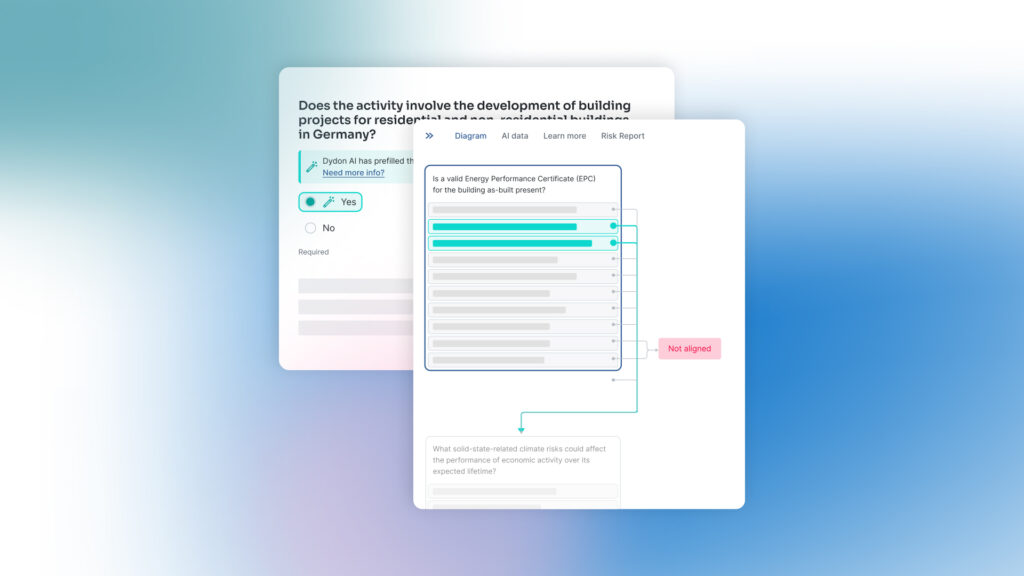Data centers are the backbone of the digital age, providing the essential infrastructure for data storage, processing, and transmission. In Europe, their rapid expansion has raised significant concerns about energy consumption.
Since 2010, the number of internet users worldwide has more than doubled, with global internet traffic increasing 20 times. According to the International Energy Agency (IEA), data centers and data transmission networks accounted for about 1% of global electricity use in 2020, a figure expected to rise as demand for digital services grows. To align with the Net Zero Emissions (NZE) Scenario, emissions must halve by 2030.
To address these concerns, the European Union has transformed the previous European Code of Conduct for Data Centres (EU DC CoC) into a more formal set of requirements with a new Assessment Framework for Data Centers. This framework evaluates whether data centers comply with the European Taxonomy for sustainable activities and supports the mandatory reporting requirements of the upcoming Corporate Sustainability Reporting Directive (CSRD).
EU Taxonomy and Data Center
The EU Taxonomy is a classification system created to identify and promote environmentally sustainable economic activities. It aims to increase transparency and direct capital towards investments that support sustainability. For data centers, it includes criteria under Activity 8.1: “Data processing, hosting, and related activities,” focusing on sustainability and energy efficiency.
This framework is overseen by the European Commission’s Directorate-General for Communications Networks, Content, and Technology (DG CONNECT). Companies report their sustainability performance in compliance with the CSRD and potentially the Sustainable Finance Disclosure Regulation (SFDR) – ensuring large companies, including data centers, align with these requirements.
Development and Structure of the New Assessment Framework
The assessment framework for reporting the sustainability aspects of data centers was developed in autumn 2022, coordinated by the Testing Inspection and Certification Council (TIC Council), and published in March 2023. It is based on best practices from the EU Code of Conduct (CoC), translating nearly 160 best practices into 106 evaluation criteria.
The framework distinguishes between Expected Minimum Practices, Retrofit Practices, and Expected Practices, divided into three main aspects:
- Management (MGM): Covers the foundations of an energy management system, such as those based on ISO 50001.
- Information and Communications Technology (ICT): Includes requirements for energy-efficient procurement and use of ICT devices.
- Infrastructure (INF): Details requirements for energy monitoring systems and practices, focusing on air conditioning, ventilation, and power.
EU Taxonomy Criteria for Data Centers
Annex I of the EU Taxonomy Delegated Act outlines the technical screening criteria for determining whether an economic activity substantially contributes to climate change mitigation without causing significant harm to other environmental objectives.
For data centers, criteria include:
- Implementation of Relevant Practices: Data centers must implement practices from the European Code of Conduct for Energy Efficiency in Data Centres. This implementation needs to be verified by an independent third-party auditor at least every three years.
- Operational Sustainability KPIs: Data centers must establish systems and procedures for measuring, recording, and reporting data and key performance indicators (KPIs) related to operational sustainability. These systems ensure that the data center can monitor its sustainability performance effectively.
- Avoiding Significant Harm to Other Environmental Objectives: This includes ensuring that operations do not adversely impact objectives such as water use, pollution prevention, biodiversity protection, and circular economy practices.
EU Energy Efficiency Directive (EED)
The EU Energy Efficiency Directive (EED) requires data centers to actively monitor and report their energy usage and emissions, aligning with the EU’s sustainability objectives. Recent updates to the directive include a binding target to reduce the EU’s final energy consumption by 11.7% by 2030. The directive also sets incremental targets for annual energy savings, starting from 0.8% now to 1.3% between 2024 and 2025, increasing to 1.5% from 2026 to 2027, and reaching 1.9% from 2028 onwards. The directive emphasizes the implementation of energy management systems and systematic energy audits.
Starting 15 May 2024, EU data center owners and operators must annually report their previous year’s energy performance into a European database. This report is required l to cover the period from May 2023 onward. Additionally, a public consultation on the Draft Delegated Act (DDA) proposes a common rating system for data center energy performance in the EU and EEA. The DDA specifies the energy key performance indicators (KPIs) and sustainability indicators to be reported. The aggregated data will be publicly accessible.
Key provisions of the EED for data centers include:
- Mandatory Reporting: Operators of data centers with a total rated power of at least 500 kilowatts (kW) must publicly report their energy performance data annually. This includes metrics such as energy consumption, Power Usage Effectiveness (PUE), temperature set points, waste heat utilization, water usage, and the use of renewable energy.
- Waste Heat Utilization: Data centers with a total rated power above 1 MW are required to repurpose their waste heat for heating or other energy recovery applications unless it is not technically or economically feasible. This promotes circular economy practices and reduces fossil fuel dependency.
- Renewable Energy Integration: Data centers are encouraged to prioritize renewable energy sources for their electricity needs, reducing their carbon footprint and supporting a sustainable energy mix.
- Optimizing Energy Consumption: Data center operators must implement measures to improve energy efficiency, such as optimizing cooling systems, using more efficient IT equipment, and adopting virtualization and server consolidation techniques.
Under the revised EED, local authorities must also prepare heating and cooling plans to reuse excess heat generated by data centers. These measures aim to cut energy use in Europe by 11.7% by 2030, supporting the EU Green Deal’s target of a 55% reduction in carbon emissions by the same year. The directive expects data centers to improve efficiency, beginning with mandatory reporting of energy use and emissions for centers larger than 500 kW.
How Dydon AI Can Help Data Centers Align with the EU Taxonomy
Navigating the complexities of the EU Taxonomy and ensuring compliance can be challenging for data centers. Our Dydon AI solutions are specifically built for the EU Taxonomy to streamline this process:
Automation and Accuracy in Reporting:
- Simplify sustainability reporting and regulatory compliance utilizing advanced AI technologies, including Large Language Models (LLMs) and Retrieval-Augmented Generation (RAG).
- Ensure precise data analysis.
- Extract essential information from technical documents automatically.
Comprehensive Risk Assessments and Support for Technical Screening Criteria (TSC):
- Use tools for calculating key metrics like CO₂ emissions.
- Get detailed climatic and geological risk assessments.
- Reduce manual workload and ensure accurate compliance with EU Taxonomy criteria.
For more information on how Dydon AI can assist your data center in aligning with the EU Taxonomy, visit our website or get a demo to see our solutions in action.
Schedule a free demo
Read more about how to navigate the EU Taxonomy with AI
Navigating EU Taxonomy Reporting: Timeline, KPIs, and Best Practices
What is the role of AI in EU Taxonomy software? Interview with our CEO Dr. Hans-Peter Güllich
EU taxonomy made easy: German savings banks use TAXO TOOL for sustainable financing projects
EU Taxonomy Software (Taxo Tool) Testimonial: Sparkasse Bremen






